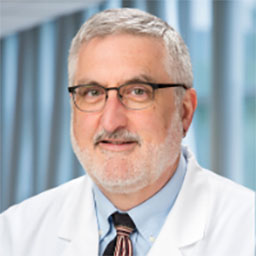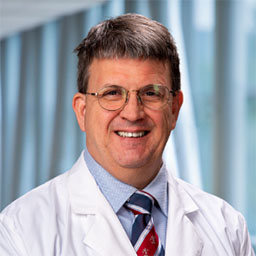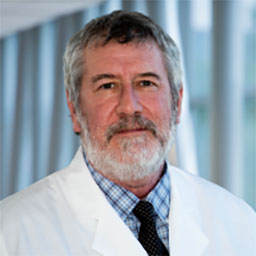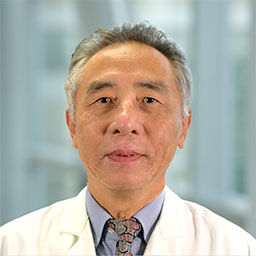Medical Imaging Physics Residency
Why UT Southwestern
The Medical Imaging Physics Residency Progam in the Department of Radiology includes two years of full-time training in diagnostic imaging medical physics that emphasizes clinical excellence and academic career development. As an integral part of the Medical Physics team, residents interact with staff physicists, physicians, nurses, radiation therapists, and biomedical engineers on a daily basis as they are trained to provide safe, effective patient care, and to function independently.
The Medical Physics faculty provide clinical service and consultation at three major hospitals in Dallas, as well as multiple outpatient clinics throughout the Dallas-Fort Worth area. In addition to teaching clinical fellows and Diagnostic Radiology residents, faculty members also make meaningful contributions to the research mission of the university. As one of the world's foremost research institutions, UT Southwestern has an outstanding international reputation for life-changing research that has led to some of the most important discoveries of our generation.
Our Mission
The objective of the Medical Physics Residency program is to empower clinical diagnostic medical physics residents to advance the field of Radiology; therefore, our mission is to train exceptionally qualified diagnostic medical physicists.
Program Aims
- Provide comprehensive clinical training and experience in Radiological Imaging physics
- Prepare residents to function independently
- Foster research participation through exposure to cutting-edge technologies
The program provides two residency positions annually and consists of a 24-month term that begins on July 1.
The program is based at UT Southwestern's south campus. Training takes place at Parkland Health & Hospital System, Clements University Hospital, and Children's Health℠, in addition to their associated clinics and satellite facilities.
- Faculty
Faculty

Professor
Certification: ABR
Primary Clinical Responsibilities: Mammography, Stereotactic Breast Imaging, Fluoroscopy, Radiography
Associate Professor
Certification: ABR
Primary Clinical Responsibilities: CT, Interventional Radiology/Cardiac Cath Imaging
Rebecca Grabarkewitz, M.Sc.
Radiation Safety Officer
Certification: ABHP
Primary Clinical Responsibility: Radiation Safety
Professor
Assistant Section Chief
Certification: ABR
Primary Clinical Responsibilities: Interventional Radiology, CT, Informatics, PHHS Site Supervision
Associate Professor
Certification: ABR, ABSNM
Primary Clinical Responsibility: Nuclear Medicine and PET
Professor
Chief Radiology Officer, Children's Health
Certification: ABR
Primary Clinical Responsibility: Children's Health Site Supervision
Professor
Primary Clinical Responsibilities: MRI, Informatics
Associate Professor
Certification: ABR
Primary Clinical Responsibilities: Nuclear Medicine and PET, Ultrasound, Mammography
Assistant Professor
Certification: ABR
Primary Clinical Responsibilities: CT, mammography, Fluoroscopy
Professor
Certification: ABR
Primary Clinical Responsibilities: MRI, Pediatric Imaging
Research Lab
Assistant Professor
Certification: ABR
Primary Clinical Responsibility: CT, MRI, Ultrasound, Mammography, Fluoroscopy, Radiography
Associate Professor
Certification: ABR
Primary Clinical Responsibilities: Radiography, Fluoroscopy - Program Highlights
Program Highlights
In addition to completing the process of ABR certification, graduates learn to perform other aspects of an academic imaging physicist's responsibilities including teaching, research, radiation safety and administration. The training curriculum is designed to train the resident for a career in a hospital-based environment as a full-time member of the staff or faculty.
Residents must fulfill six basic requirements to complete the residency program, namely:
- Successful completion of all 10 clinical rotations and clinical special procedures. The rotation schedule includes all aspects of clinical training described in the CAMPEP standards in a 2-year period. For each rotation, the resident is assigned one or more mentors from the Medical Physics faculty and is responsible to perform clinical tasks under his/her supervision. These tasks are part of the routine clinical service provided by the Radiology Medical Physics group.
Year 1
(weeks)Year 2
(weeks)General Radiography 5 5 Fluoroscopy 3 3 Interventional Radiology/Cardiac Cath Imaging 3 3 Mammography 4 4 CT 5 5 MRI 6 6 Radiation Safety 2 2 Ultrasound 4 4 Hybrid Imaging and Image Registration 2 0 Imaging Informatics and AI 2 2 Research 7 9 - Completion of 24 months of clinical training within the residency program.
- Completion of two oral examinations, one after each year. Oral examinations are intended to be a semiformal discussion between the faculty and a resident through which an assessment can be made of the resident's familiarity with the subject material, and to be a preparation for the oral boards segment of the ABR Exam.
- Participation in educational conferences, lectures and meetings that take place regularly within the Department of Radiology unless exempted by their mentor or prevented by clinical responsibility. Specifically, medical physics residents may and are encouraged to attend all clinical physics weekly meetings, clinical ops meetings, town halls, faculty meetings, research meetings, journal clubs, and ad hoc meetings as prescribed by their mentor.
- Residents must complete 11 ethics/professionalism modules and view one presentation regarding leadership offered online through the AAPM website.
- Residents are required to teach a minimum of four oral presentations per year. Examples of acceptable lecture formats are: clinical in-service sessions at one of the hospitals, lectures to MD residents, journal clubs, invited talks, and presentations at professional meetings. The resident's mentor, or delegate, should be present for educational presentations. The intended audience for educational presentations typically will be radiologists, radiology fellows and residents, medical students, as well as medical physicists.
- Facilities and Equipment
Facilities and Equipment
Residents are expected to practice and improve their presentation and communication skills by participating in AAPM, RSNA, ISMRM, SPR or SNMMI conferences. They will also be expected to participate in or attend the professional committee meetings at these events.
- Conferences
Conferences
Residents are expected to practice and improve their presentation and communication skills by participating in AAPM, RSNA, ISMRM, SPR or SNMMI conferences. They will also be expected to participate in or attend the professional committee meetings at these events.
- Research Opportunities
Research Opportunities
All faculty members participate in one or more research projects, presentations, or publications per year, and are active in professional societies and meetings. Clinical research projects may be assigned to residents as they become available. These projects are clinical in nature and enhance clinical training. However, in addition to the primary faculty, residents have ample opportunities to interact with medical staff from other clinical and academic services including Radiation Oncology, Radiation Safety, the Advanced Imaging Research Center and UT Southwestern clinics.
- Salaries and Benefits
Salaries and Benefits
The stipend for Medical Physics residents is derived from the Dallas County Parkland Medical Center salary scale for medical residents. The amount, shown in the chart below, depends on the year of residency training.
Salary PGY 1 $70,101 PGY 2 $72,672 Benefits include:
- Comprehensive health coverage at no cost to the resident. Dependent health coverage, supplemental life, dental, and vision plan insurance are available for both the resident and his/her dependents at a reduced rate
- Low-rate automatic eligibility disability coverage
- Malpractice and a basic life insurance policy are provided
- Time for professional development
- Professional career training
- Professional allowance (discretionary account) to support travel and other professional needs
- Dallas offers a lower cost of living than many U.S. cities. Compare cost of living and relocation.
The resident's assignments and vacation usage will be determined and/or approved by the Program Director. Residents accrue vacation and sick leave on a monthly basis and may utilize such leaves consistent with State Law and the Policies and Procedures adopted by UT Southwestern to implement the State Law.
- How to Apply
Application Process
To apply to the Medical Imaging Physics Residency Program, you must have a doctoral Ph.D. degree in medical physics from a CAMPEP-accredited graduate program or a Ph.D. degree in physics (or related field) with completion of a CAMPEP-accredited Certificate Program in Medical Physics. A valid license from the Texas Medical Board (TMB) is also required to practice equipment performance evaluation under supervision.
CAMPEP equivalence of graduate medical physics courses is demonstrated by: a) presenting transcripts from a CAMPEP-accredited graduate program, b) presenting transcripts from a CAMPEP-accredited certificate program.
CAMPEP Residency Standard 2.13 states "an accredited program must publicly describe the program and the achievements of its residents, preferably through a publicly accessible website, readily accessible from the program website home page. This information must be updated no less often than annually and must include the numbers of applicants to the program, of applicants offered admission, of residents entering the program, and of graduates. Information on the subsequent positions of graduates shall also be provided, i.e., numbers in academics, clinical practice, industrial positions, etc. This information should not identify individuals.
The following is a table providing such information:
Academic Year Number of Applicants # Offered # Enrolled # Graduated Destination of Graduates Clinical Industry Academic 2022 20 1 1 N/A N/A N/A N/A 2023 12 1 1 1 N/A N/A 1 2024 14 1 1 N/A N/A N/A N/A 2025 21 1 1 1 1 N/A N/A To register, visit the MedPhys Match website and obtain an NMS ID number. Then visit the AAPM Medical Physics Residency Application Program (MP-RAP) website for instructions on applying to the program.
